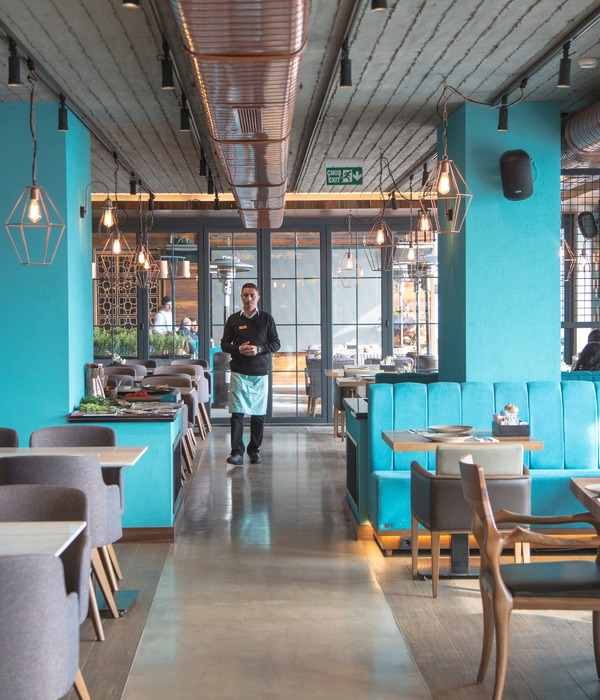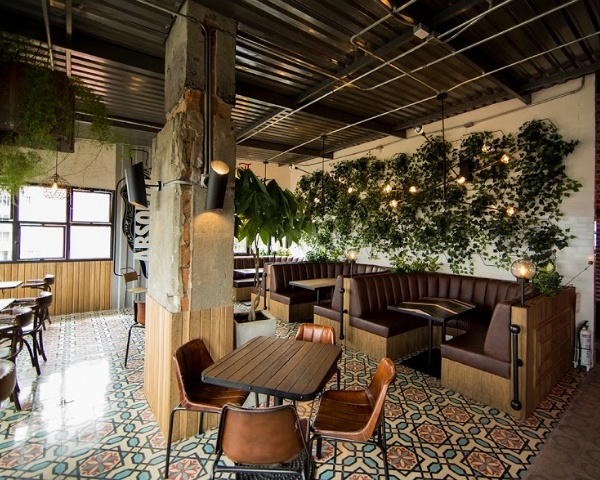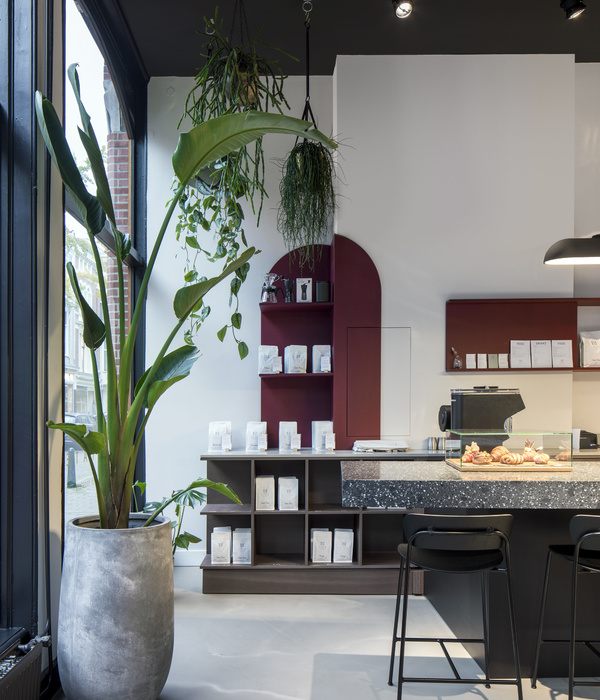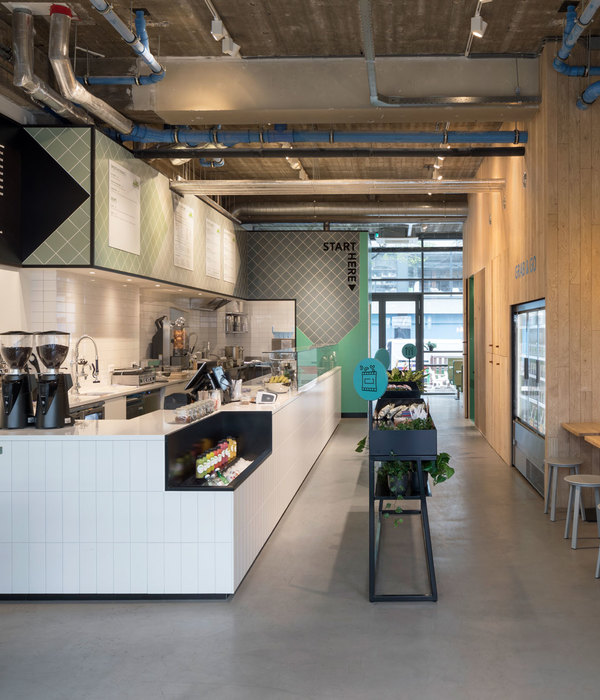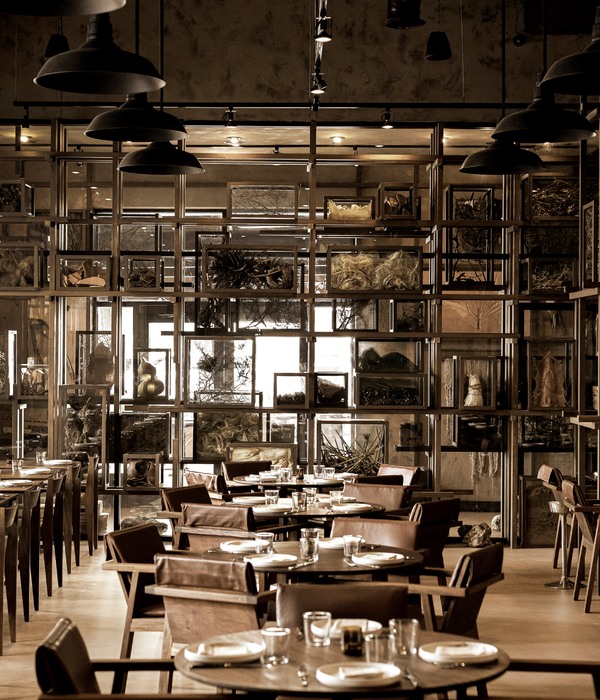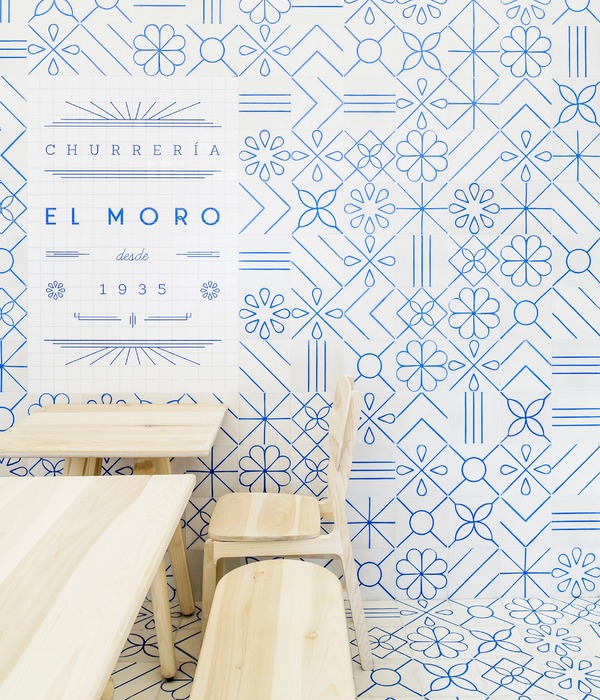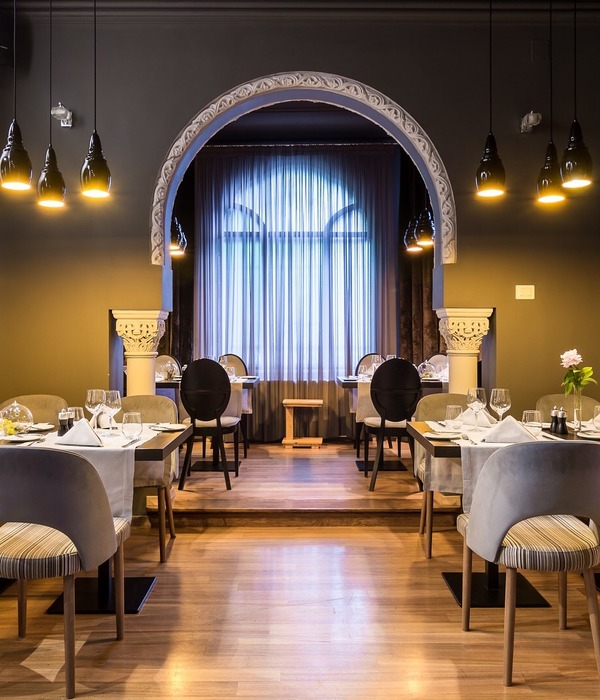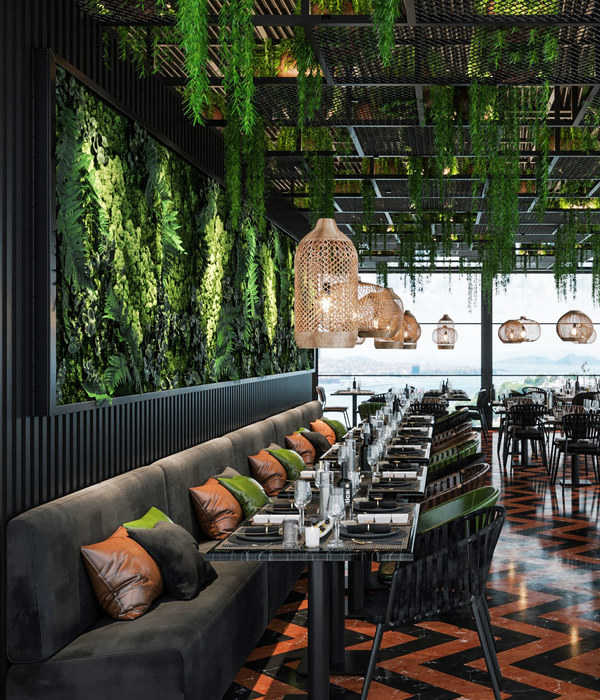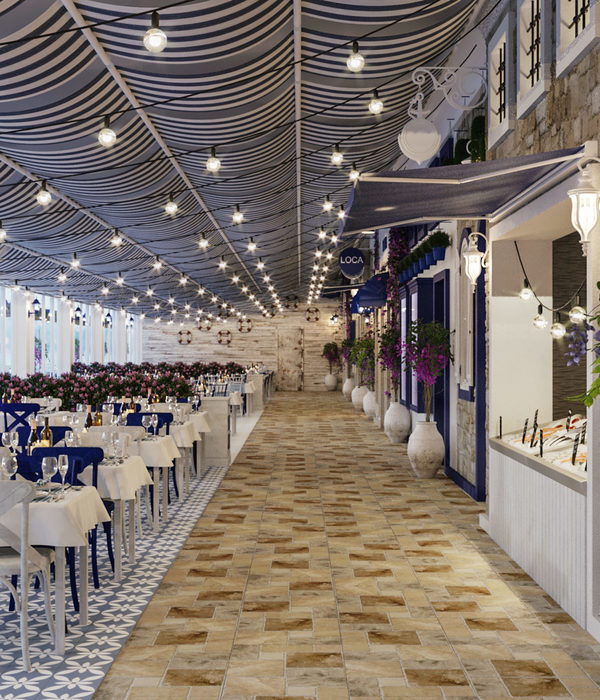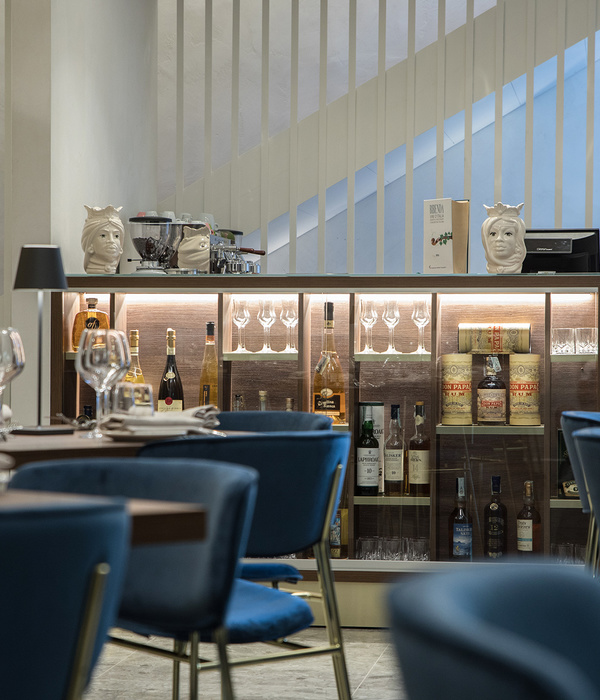丽江是中国最受欢迎的旅游目的地之一,也是纳西族的聚居地,这里有着独特的建筑风格和文化习俗。该项目位于一个景区的旧建筑当中,设计师的任务是要在保护旧建筑的同时,为它引入新的设计元素。
Lijiang is a popular tourist destination in China and also a gathering place of the Naxi ethnic group. Architectural style and cultural customs here are unique. The project itself is an old building of the tourist area. The preservation of the old building and the proper introduction of new design elements are the attractions in this design.
▼餐厅外观,exterior view
为了保护旧建筑的结构和木制立柱,设计团队对既有建筑的表面材料和梁柱结构进行了杀菌、防腐和防水处理,在延长其服务寿命的同时,也彰显了建筑本来的气质和特征。新置入的钢结构对双层餐厅起到了支撑作用,以进一步增强建筑结构的稳定性。
As to protection of the old structure and the wooden columns, we adopt the treatment methods of deinsectization, anticorrosion and waterproofing to make the original building materials and wooden beam and column structure reflect the original state of nature while extending the service life. Adding steel structure reinforcement to support the use of the two-floor restaurant ensures the stability of the structure.
▼室内概览,新置入的钢结构对双层餐厅起到了支撑作用,interior overview,steel structure reinforcement is added to support the use of the two-floor restaurant
设计师将整个空间当做一个用于展示当地独特织布的“展厅”。11种精心挑选出的纳西族传统特色面料自然而然地成为了展厅中的“收藏系列”,它们覆盖了餐厅的每个角落,包括天花板、墙壁以及家具。鲜艳的色彩、令人愉悦的视觉体验以及传统布料的天然质感都是设计师选择这些布料的原因,同时也是该项目最具挑战性的部分(餐厅设计项目对布料的防尘性和耐火性有着严格要求)。
We use the whole space as an exhibition room for a very special collection of unique local fabrics as concept. The 11 kinds of specially-selected fabrics with traditional Naxi characteristics naturally become the “collection”, covering every corner of the whole restaurant space: ceiling, walls and furniture. The vibrant colours, pleasant visual experience and the natural touch of the local traditional cloth are important reasons for our choice and also the most challenging part of the project (the dirt resistance and fire resistance of the fabric are the significant taboos in the restaurant design project).
▼11种纳西族传统特色面料覆盖了餐厅的每个角落,11 kinds of specially-selected fabrics with traditional Naxi characteristics cover every corner of the whole restaurant space
在设计的中后期阶段,设计团队对这11种面料进行了实验,最终实现了布料的自我防护性能,并满足了防火等级标准的要求。与此同时,当地的手工匠人也对项目的完成做出了重要的贡献——每平方米的布料需要花费11个小时才能完成。除了布料,空间中还使用了熏黑的榆木元素,在平衡空间配色的同时还起到了营造框架和划分区域的作用。
In the middle and later stages of the design, we experiment with the 11 kinds of fabrics themselves and finally realise the protection of the natural surface of the cloth and meet with requirements for fire-protecting rating standard, which plays the decisive role in implementing the concept. At the same time, the local handicraftsmen’s work for 11 hours per square meter also contributes a lot to the integrity of the project. The use of local smoked elm adds another important colour to space – black and it creates areas and frames in addition to the fabric, which controls the balance in spatial hue.
▼熏黑的榆木元素平衡了空间配色,同时起到营造框架和划分区域的作用,the use of local smoked elm creates areas and frames while also controlling the balance in spatial hue
▼设计手稿,design sketches
▼1层平面图,plan 1F
▼2层平面图,plan 2F
▼楼梯立面-布艺放样图,stair elevation – fabric detail
{{item.text_origin}}

